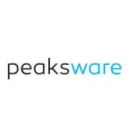What makes a dynamic duo dynamic? Besides just a knack for teamwork, a lot, actually.
Take a famous pair like Sherlock Holmes and Dr. John Watson, the fictional crime solvers from the mind of Arthur Conan Doyle. They’re opposites: Holmes is eccentric, moody, awkward and sharply observant. Watson is patient, level-headed and down-to-earth. But together, they balance each other out, their characteristics contrasting but well-matched.
Beyond their banter and complementary traits and skills, they have trust, mutual respect and established communication, enabling them to excel as a team more than they ever would as individuals.
That same partner-in-crime mentality that made Holmes and Watson so successful isn’t just limited to the streets of London. In tech, product and engineering teams maintain the same characteristics that make for well-functioning teams.
“Product managers and engineers are partners-in-crime in the product development cycle,” said Madi Palermo, senior director of product management at Ibotta. “Their relationship has a huge impact on the teams’ success and overall mission.”
According to Palermo, communication, consistency, complementary skills and courage are the keys to a successful dynamic relationship between product and engineering. Erin Knight, a product manager at Peaksware, said another element is critical to a successful relationship between engineering and product: empathy.
Built In Colorado found out more about what makes the relationship successful from these two local leaders.
Through its partnerships with brands and retailers like Kraft Heinz, Kellogg, Target and Uber, Ibotta gives users cash back on groceries and other retail purchases.
As a product manager, what are the key ingredients for a successful relationship with your engineering team?
To gain buy-in and support from engineering, product managers can reference three principles regardless of industry or team size.
First, do what you say you’re going to do. Engineering relies on product to provide a clear vision statement and prioritized backlog to align with business goals. These are table stakes for most product roles. Consistently completing product manager tasks well instills reliability and accountability.
Second, manage scope and protect the team. Most product launches suffer from scope creep and change. That’s the beauty of building software iteratively: We get to change our minds. But teams can’t ship meaningful results if the scope or goals frequently change. The product manager must work with stakeholders to set the scope early and argue for a quality, lean minimum-viable product.
Third, drive results and balance tech debt. Product ensures engineers build the right things and solve the right problems. It’s equally important to understand the value of managing tech debt and only building feasible features.
The best product and engineering duos seek advice from one another while maintaining boundaries around their respective areas of responsibility.”
Describe how your product and engineering teams intersect, and how this organizational structure helps build the relationship between the two.
Product drives stakeholder engagement, roadmap planning and evangelism, and objectives and key results and goal-setting sessions. There are two processes in product development that run parallel to each other: product discovery and product delivery. In discovery, we create and validate prototypes that solve customer problems, and in delivery, we bring the output of discovery to life. It’s crucial to have an engineering partner engaged in both aspects of product development. Before we think about creating and validating solutions, we first need to understand if they’re feasible to build. Product typically drives discovery, while engineering drives delivery, but they rely on one another’s strengths and have complementary skill sets.
What communication strategies do you use to ensure engineers share your product vision?
Product managers take responsibility for the “why” and “what” behind a product while engineering defines the “how” and “when.” The best product and engineering duos seek advice from one another while maintaining boundaries around their respective areas of responsibility. Be open to the possibility that a winning design concept or new feature idea will come from engineering.
Involve engineering early on as you set the product strategy and vision. You’ll gain their respect if you have the courage to go for a strong, bold vision that is backed by substantial data and market insights.
Peaksware develops software to make practice perfect for musicians and athletes. Its platforms connect athletes, performers, creators and instructors through a training model that ensures they’re reaching their goals with the necessary instruction to get there.
As a product manager, what are the key ingredients for a successful relationship with your engineering team?
Having mutual respect for each other makes it easier to have open and honest conversations when things are going as planned, but especially when they aren’t. I try to avoid surprises and ensure everyone knows what’s coming by communicating early when there’s a change of plans.
Standardizing practices that work well across development teams means we can increase consistency and learn from each other.”
Describe how your product and engineering teams intersect, and how this organizational structure helps build the relationship between the two.
I work best when I am in touch with what the developers are doing. This doesn’t mean micromanaging, but instead joining standup meetings, whiteboarding or workshopping new ideas, and taking part in demos so I’m on the journey, too. If something doesn’t go as planned, I already know why and how we got there, and we can collaboratively move forward. Our product managers meet periodically to align with the product roadmap across teams and share what is working well or identify areas we can improve collectively. Standardizing practices that work well across development teams means we can increase consistency and learn from each other.
What communication strategies do you use to ensure engineers share your product vision?
I work closely with designers and engineers when defining new work. We iterate on the design and review it weekly or as needed to get technical feedback from engineers and ensure the visual design solves the problem efficiently. A whiteboard or mockup can quickly confirm that we are on the same page, and we avoid unnecessary rework later.









